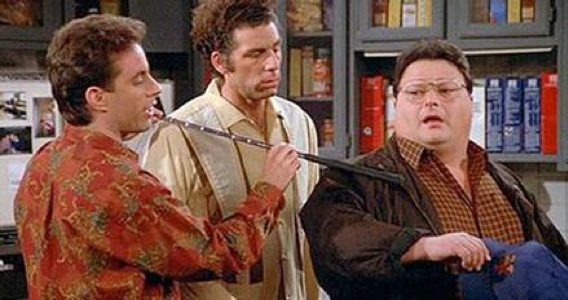The “Magic Loogie” scene is vintage Seinfeld. It is a pastiche of Oliver Stone’s 1991 classic film JFK. It parodies the CIA’s flimsy magic-bullet theory, trumped up to explain away the 1963 assassination of President Kennedy. Jerry’s magic-loogie theory is a master class in scientific analysis.

Four centuries ago, William Shakespeare would have approved. He appreciated the comedic twists in real-life events. His masterful folio of plays constantly explored the role of worldly circumstance and probed the mysteries of human behaviour. For example, Hamlet’s immortal words observed: “There are more things in heaven and earth, Horatio, than are dreamt of in your philosophy.”
There are dozens of popular techniques for analyzing situations, problems, decisions, and their implications and impact in public policy and administration. They are often used in combination to complete the analysis required. They remind us of the need to analyze and not just to describe things. Analytical frameworks separate the masters of change management from pedestrian practitioners.
Theory of Change
Theory of Change is a results-based approach to strategic management commonly used to design and mount international development projects. It is comprised of interconnected building blocks: goal, purpose, outcomes, outputs, activities, inputs. The vertical logic shows project intent and causal relationships. The horizontal logic reveals project measurement, sources, and verification.
Theory of Change illustrates comprehensively how and why desired change is expected to happen in a particular context. It is focused on mapping the ‘missing middle’ between what a change initiative does (its activities or interventions) and how these lead to achieving desired goals. It first identifies the desired long-term goals and then works backwards to identify the conditions (outcomes) that must be in place and how they relate to one another causally for the goals to occur.
Logical frameworks map the activities or interventions that lead to the outcomes identified as preconditions for achieving long-term goals. Logistical frameworks allow the precise linkages between activities and achievement of long-term goals to be more fully understood. Better planning ensues when activities are linked to a detailed understanding of how change actually happens. Better evaluation results when progress towards achieving longer-term goals rather than program outputs is measured.
Learning by doing
During offerings of PPAS 3190 Public Administration, York University undergraduate students write a final exam that seeks to consolidate learning, advance critical thinking, and test new competencies. Students are asked to explain their Theory of Change about a case study entitled City of Winnipeg: Winnipeg Police Board’s Indigenous Council on Policing and Crime Prevention. The case is drawn from IPAC’s Innovation in the Public Sector series.
The case explores policy capacity mechanisms that support innovation in a complex context. The Council is unprecedented in police governance, enshrining the voice of and commitment to Indigenous people in formal relationships. The case examines the organizational motivations, government obstacles, and resource implications of adopting innovation.
Students sometimes exceed expectations. They painstakingly sketch sound, clear, and coherent argumentation. They demonstrate grasp of the issues and original thinking. But they struggle somewhat with analysis, leaving room for more practice to sharpen their technique.
Case studies are a practical way of honing the manager’s craft while simulating real-world risks. Those who master analytical frameworks strengthen change management. They benefit from:
- Reasonable and measured findings based upon quality analysis of variables and relationships;
- Appropriate remedies derived from correct diagnosis of problems;
- Balanced solutions that satisfy the public interest; and
- Rigorous analytical work, process, and thinking made more visible.
What is the bottom line for middle managers? In public administration, managers are expected to think critically, assess the evidence thoroughly, and explain how the analysis was done and why the methodology was chosen. Mastering change means total quality management.
This concludes the series on Managing Change. Dr. John Kotter offers this poignant advice to managers going forward: “The notion that you are the grand leader and that it will be communication from you that will win over the troops is totally naïve. If you’re trying to make a big change, think more in terms of a social movement.”
JOHN WILKINS IS ASSOCIATE: PUBLIC MANAGEMENT AT YORK UNIVERSITY (JWILKINS@SCHULICH.YORKU.CA). HE WAS A CAREER SENIOR PUBLIC SERVANT AND DIPLOMAT.
